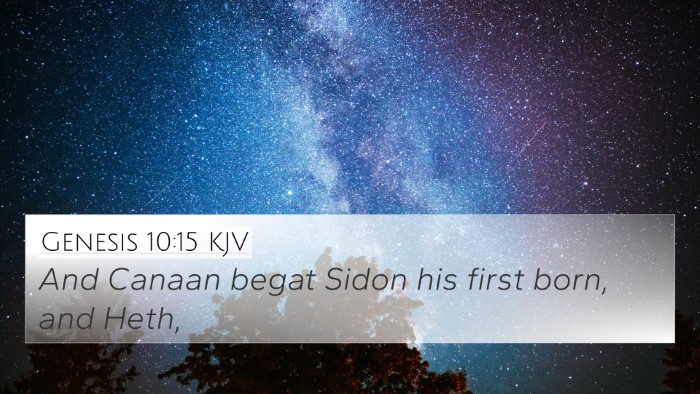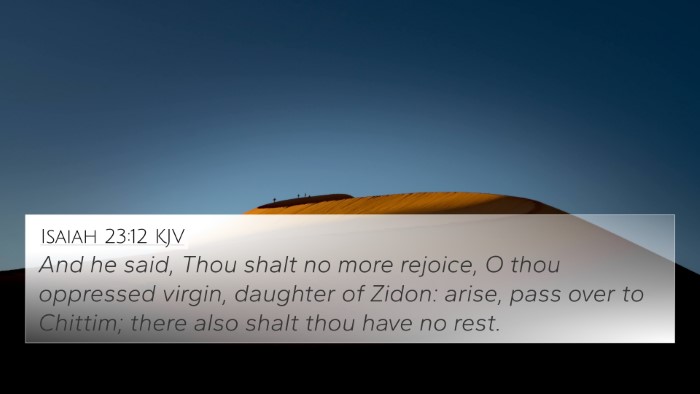Understanding Mark 7:24
Mark 7:24 states: "And from there he arose and went away to the region of Tyre and Sidon. And he entered a house and did not want anyone to know, yet he could not be hidden." This verse offers profound insights into Jesus' earthly ministry and interactions.
Contextual Background
In this passage, Jesus attempts to withdraw from the multitudes after His teachings and healings. His journey to Tyre and Sidon signifies a brief retreat from the Jewish territories, as these regions were primarily Gentile. This departure underscores His mission's expanding scope beyond Israel.
Commentary Insights
-
Matthew Henry:
Henry emphasizes that Jesus often sought solitude due to the pressure of the people surrounding Him. This withdrawal is not an indication of weakness but a strategic move to prepare for more significant works ahead. His intent to remain hidden reflects the often misunderstood nature of His mission.
-
Albert Barnes:
Barnes highlights the geographical importance of Tyre and Sidon. These cities were known for their paganism and were historically inhospitable to the Jewish faith. Jesus' presence here illustrates His reach beyond Jewish exclusivity, indicating that His message was meant for all humanity.
-
Adam Clarke:
Clarke notes the irony that Jesus, while desiring privacy, attracted attention wherever He went. Clarke discusses the acknowledgment of Jesus' power and authority, as evidenced by the fact that His fame would not allow Him to stay hidden. This speaks to His divine nature, surpassing human limitations.
Bible Verse Cross-References
Mark 7:24 connects with numerous other scriptures that explore themes of Jesus' mission, divine authority, and His interactions with Gentiles. Here are some relevant cross-references:
- Matthew 15:21-28: This passage recounts Jesus' encounter with a Canaanite woman, emphasizing faith and His willingness to heal regardless of ethnic background.
- Luke 4:26-27: Here, Jesus refers to Elijah and Elisha, who performed miracles outside Israel, highlighting God's grace toward Gentiles.
- Mark 3:8: The multitude from Tyre and Sidon seeks Jesus, showcasing how fame spread beyond the Jewish regions.
- Acts 10:34-35: Peter explains that God shows no partiality, affirming that the Gospel is accessible to Gentiles.
- John 12:20-21: Greeks seek Jesus, illustrating the draw of His teachings beyond Jewish bounds.
- Romans 1:16: Paul emphasizes that the Gospel is for everyone, Jew first but also for the Gentiles, echoing the inclusivity of Jesus' mission.
- Galatians 3:28: This verse delineates the equality of all believers in Christ, breaking down barriers of ethnicity and status.
Thematic Bible Verse Connections
The connections between these verses highlight important themes in scripture:
- Inclusivity: Jesus' ministry expands to embrace all nations, as confirmed in the Great Commission (Matthew 28:19).
- Divine Authority: His ability to attract attention and perform miracles showcases His divine identity.
- Faith: The responses of individuals, particularly Gentiles, often highlight the necessity of faith for receiving God's grace.
Interpreting Biblical Themes
Through examining Mark 7:24 and its cross-references, one can discern the overarching theme of God's universal love and the indiscriminate nature of His grace.
This reflects in Jesus’ ministry which challenged existing religious paradigms, advocating indiscriminate compassion and healing.
Study Tools for Cross-Referencing
For those wishing to explore further cross-references, consider the following:
- Bible Concordance: A crucial resource for tracing keywords and themes across scripture.
- Bible Cross-reference Guide: Guides that showcase relationships between verses.
- Cross-reference Bible Study: Techniques for understanding the interconnectedness of scripture.
Conclusion
Mark 7:24 serves as a vital piece in the narrative of Jesus' ministry, reminding us of the radical inclusivity and profound nature of His mission. Cross-referencing this verse with others helps believers grasp the depth of God's plan for salvation that transcends cultural and societal boundaries.


















